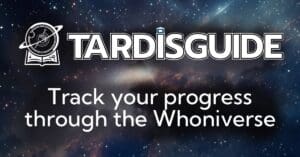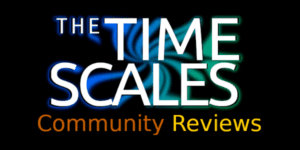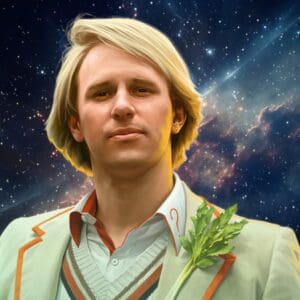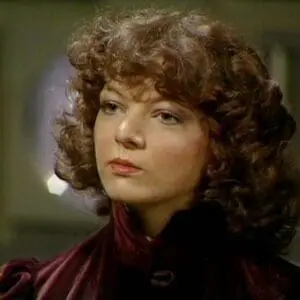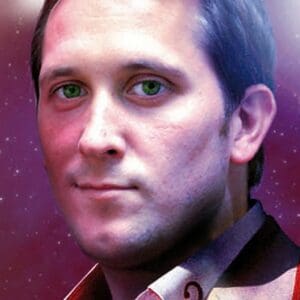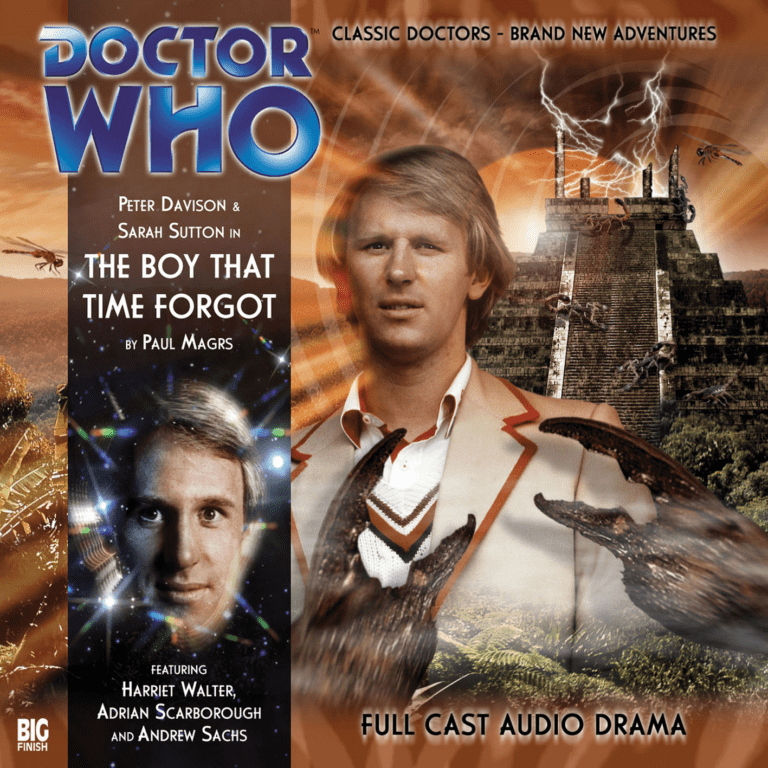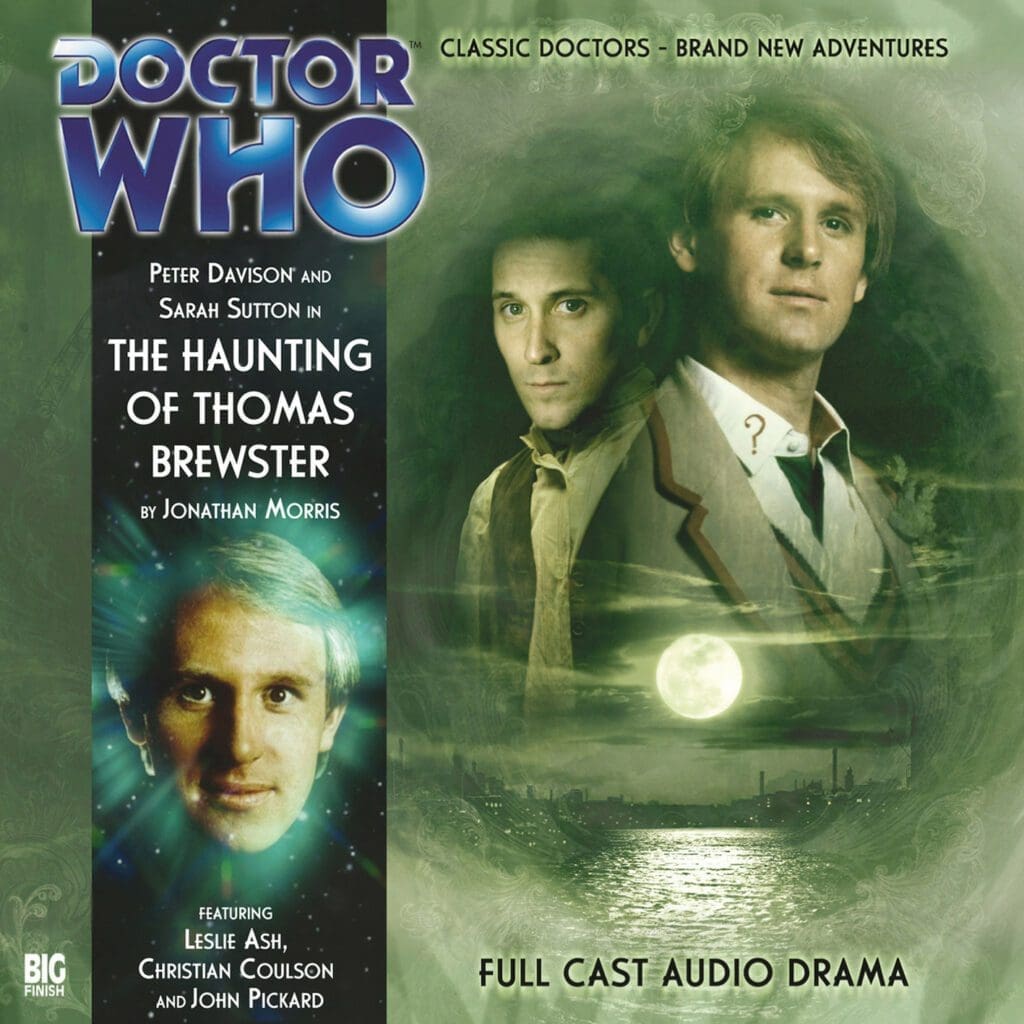
Main Range • Episode 107
The Haunting of Thomas Brewster
Reviews and links from the Community
This review contains spoilers
Review of The Haunting of Thomas Brewster by deltaandthebannermen
The Haunting of Thomas Brewster is (as the writer, Jonathan Morris, admits in the interview extras) very much inspired by the ghost stories of Charles Dickens (and other later, non-Victorian writers such as M R James and Susan Hill). The Haunting of Thomas Brewster is centred on the atmosphere often conjured by Victorian stories on television and film.
This story fits the stereotype of Victoriana. Another story with a similar atmosphere and tone to this audio was the DWM comic strip The Curious Tale of Spring-Heeled Jack. Coincidentally, that story also featured gaseous alien beings, just as this story does. Spring-Heeled Jack’s aliens were rooted in the gaslights which began to line London streets around this time. The Haunting of Thomas Brewster’s gaseous aliens are more synonymous with the London fog so often used in horror and thriller stories set in this time. The Unquiet Dead also features gaseous style aliens with the Gelth, again being aligned with the gaslamps dotted around Gabriel Sneed’s funeral parlour – more on this thematic link of Victorian-based aliens another time.
Another link between stories is between this and Assassin in the Limelight. In that story, the plot of Lincoln’s assassination, Knox’s time meddling and the possessive Indo often took second place to the characters of the Doctor, Evelyn and Knox. In The Haunting of Thomas Brewster, we also find a lot more focus on the characters than the rather thin plot of aliens from the future trying to create their own future. The script spends more time on the eponymous Thomas Brewster (which is to be expected, bearing in mind the title of the story) but also takes time to take a look at the relationship between the Doctor and his temporary assistant Robert McIntosh. Whilst not as interesting as the character work presented in Assassin in the Limelight (and arguably not as well acted by the guest cast) it does have some interesting aspects.
Thomas Brewster is, basically, the Artful Dodger. The behind the scenes interviews explain that Big Finish wanted to try a companion character like Adric, but done right. Whether or not they succeeded at this is something I may look at when I review Industrial Revolution in a couple of stories time which is Brewster’s final story, but in this story at least he does work as a ‘Dodger’-type character. Aside from ghost stories, Oliver Twist is the other obvious inspiration for the whole story including Brewster’s character: the orphan; the workhouse; the Fagin-like Creek; the well-to-do aristocracy (represented by the Doctor, McIntosh and Nyssa) taking in the urchin from the wrong side of the tracks. The difference of course is that whereas in Oliver Twist the orphan ‘belongs’ in the upper echelons of society, Brewster is a born and bred denizen of the gutter and, at the first opportunity, nicks the TARDIS. Brewster is written as a wrong-un but I don’t think he comes across as self-serving as the production team want him to. His epiphany in the final episode softens any edge he might have had earlier and his stealing of the TARDIS at the close of the episode comes rather out of the blue. John Pickard does his best with the script but he’s not the most successful of characters.
It’s been a while since I listened to Time Reef, the next story to feature his character, but I have recently listened to The Crimes of Thomas Brewster which again seems a little too desperate to show how self-serving his character is but just seems to soften his edges too much. Maybe I’m missing the point of the character but it will be interesting to see how he develops in The Feast of Axos and subsequently Industrial Revolution.
The other main guest character is Robert McIntosh, the Doctor’s assistant. When The Haunting of Thomas Brewster was announced much was made of Christian Coulson (Tom Riddle from the Harry Potter movies) joining Peter Davison and Sarah Sutton as a new character, Robert McIntosh. I am sure the publicity at the time suggested he was the new ‘companion’. I could be misremembering, but if I wasn’t, it was obviously a tactic to draw attention away from the actual new companion of Brewster. There is some good work between Coulson and Davison when McIntosh discovers that the Doctor has been misleading him for the past year, although it stretches credulity a little that in all that time, Robert never once brought up the fact the Doctor had a Police Box in his house. Unfortunately, Robert sacrifices himself to save the Doctor (something I had completely forgotten from my original listen a few years ago) meaning much of this character work is a little wasted, not helped by the fact that Robert is then never mentioned again demonstrating how rather throwaway he was. I feel it would have been much more fun to have had hints of many unseen adventures for the pair (a little Jago and Litefoot in tone, maybe) which could have been a source of jealousy for Nyssa. (It would also have allowed for a cross-over further down the line with Jago and Litefoot teaming up with the 5th Doctor and Robert to defeat some terrible Victorian menace…although actually this story is set much earlier than The Talons of Weng-Chiang, so any encounters would have to have involved some form of timey-wimeyness. If McIntosh hadn’t died, maybe he could have come into Jago and Litefoot as a guest character…but I’m rambling now).
All in all, The Haunting of Thomas Brewster is something of a mixed bag. Whilst I am not as vehemently against Brewster as a character as some fans, I do think his characterisation is a little fudged and not quite as successful in what they were trying to do as they may have hoped. The plotline of ghostly apparitions feels a little cliched but the structure of the whole story is interesting: Episode 1 is entirely from the point of view of Brewster showing his life from infancy to ‘the present day’; Episodes 2 and 3 involve the Doctor, Nyssa and Robert and we explore the alien’s plan; and then Episode 4 revisits the first episode from the Doctor and Nyssa’s point of view filling in some of the gaps and jigsawing the timey-wimey aspects back together. This does make for interesting listening.
What doesn’t make for good listening though is the terrible incidental music. It is truly awful. It has a ‘Sea Devil’ vibe about and just stabs into each scene with no apparent feel for the actual tone or atmosphere of the piece. It is odd that in Assassin in the Limelight, I didn’t even notice the incidental music whereas in this, I felt like I wanted to escape from it, very fast, in the opposite direction to the synthesisers creating this cacophony.
An interesting structure, a smattering of good ideas and a thematic link to other Victorian-set stories is where The Haunting of Thomas Brewster leaves me.
This review contains spoilers
Review of The Haunting of Thomas Brewster by thedefinitearticle63
This is part of a series of reviews of Doctor Who in chronological timeline order.
Previous Story: Return to the Web Planet
I really like timey-wimey stories, and I'm a big fan of stories that play with the format aswell. Sprinkle in some really emotional themes and you get a great story that I thoroughly enjoyed. There's a lot to like about this one even if I'm not entirely sure on how the time-travel stuff worked towards the end.
Thomas Brewster is a fun character, a brilliant foil to 5 and Nyssa. He has a very tragic backstory which I appreciate but he really seems to shrug it off for most of the story. I'm looking forward to seeing how his character develops especially after that cliffhanger. I still can't believe that they pulled the same thing twice in a row.
I strongly recommend this story, great time-travel mystery and I personally love stories that go "full circle" like that.
Next Story: The Boy That Time Forgot
Community Ratings
(Updates coming soon:)
Add the last X members who rated it here
Add number of Favs, and who they are, here


